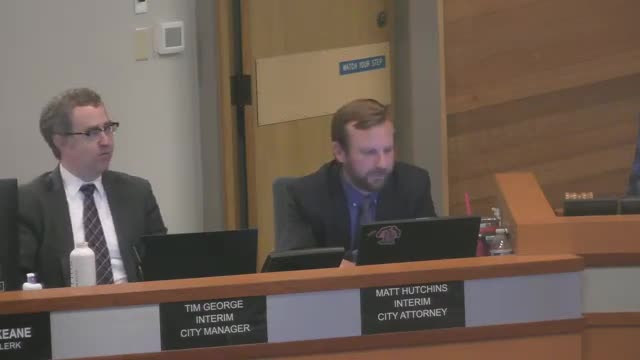Port of Seattle reveals ambitious sustainable airport master plan
October 25, 2024 | Des Moines City, King County, Washington
This article was created by AI summarizing key points discussed. AI makes mistakes, so for full details and context, please refer to the video of the full meeting. Please report any errors so we can fix them. Report an error »

In a recent government meeting, the Port of Seattle provided an update on the Sustainable Airport Master Plan (SAMP), highlighting the need for significant improvements at Seattle-Tacoma International Airport (SEA) to accommodate growing passenger demand. Local government relations manager Dave Kaplan presented the details of the plan, which aims to address challenges posed by increasing air traffic and outdated facilities.
The FAA's draft environmental assessment for the SAMP was released, marking a critical step in the planning process. Kaplan emphasized the importance of public participation in the environmental review, which assesses potential impacts of proposed projects on air and water quality, wildlife, and local communities. The review compares the SAMP against alternative scenarios, including a \"no action\" option.
The SAMP, initiated nearly a decade ago, is designed to integrate sustainability into airport operations from the outset. It outlines both near-term and long-term projects, including the construction of a second terminal and enhancements to existing infrastructure. By 2032, SEA is projected to serve over 57 million passengers annually.
To mitigate anticipated transportation impacts from these projects, the Port plans to invest approximately $40 million in improvements to local traffic flow. The environmental assessment identified one significant impact related to surface transportation, which can be mitigated below regulatory thresholds.
The draft NEPA document, comprising around 270 pages of text and extensive appendices, is available for public review. Community members are encouraged to engage in the comment process, with resources accessible online and at various local libraries. The public comment period is set for 30 days, allowing residents to voice their opinions on the proposed developments.
The FAA's draft environmental assessment for the SAMP was released, marking a critical step in the planning process. Kaplan emphasized the importance of public participation in the environmental review, which assesses potential impacts of proposed projects on air and water quality, wildlife, and local communities. The review compares the SAMP against alternative scenarios, including a \"no action\" option.
The SAMP, initiated nearly a decade ago, is designed to integrate sustainability into airport operations from the outset. It outlines both near-term and long-term projects, including the construction of a second terminal and enhancements to existing infrastructure. By 2032, SEA is projected to serve over 57 million passengers annually.
To mitigate anticipated transportation impacts from these projects, the Port plans to invest approximately $40 million in improvements to local traffic flow. The environmental assessment identified one significant impact related to surface transportation, which can be mitigated below regulatory thresholds.
The draft NEPA document, comprising around 270 pages of text and extensive appendices, is available for public review. Community members are encouraged to engage in the comment process, with resources accessible online and at various local libraries. The public comment period is set for 30 days, allowing residents to voice their opinions on the proposed developments.
View full meeting
This article is based on a recent meeting—watch the full video and explore the complete transcript for deeper insights into the discussion.
View full meeting
